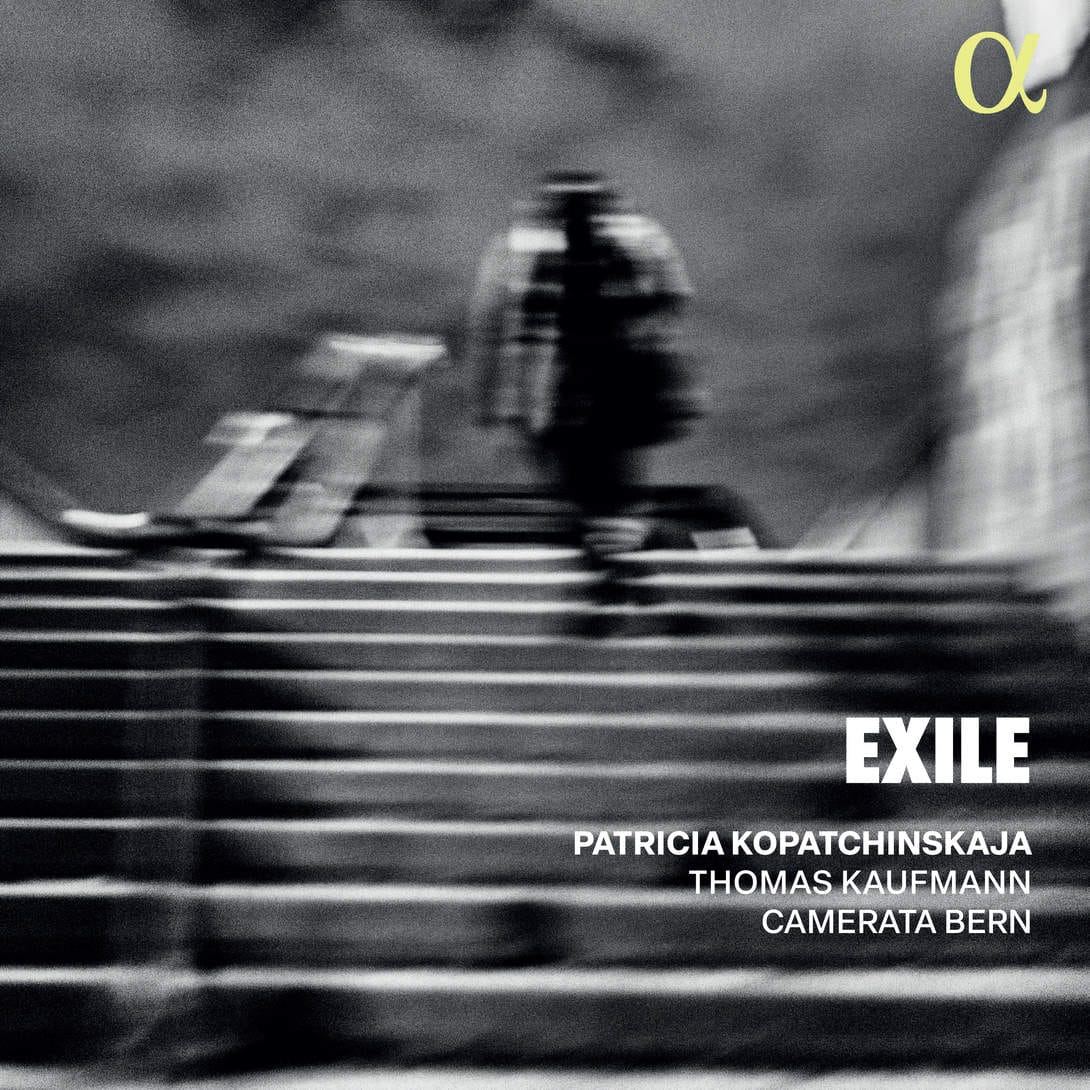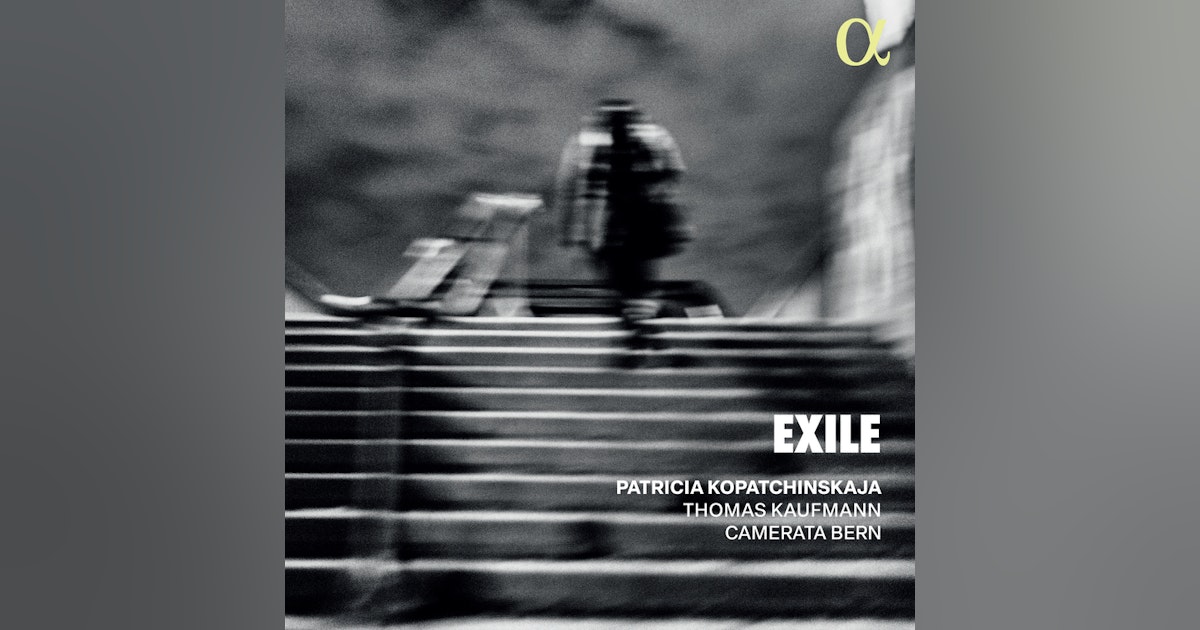
“Exile” is certainly a topic du jour, even more so Han wan Paicia Kpopatchinskaja and Thomas Kaufmann recorded this Alpha disc in March 2024 in Bern, Switzerland.
So it is that most composers on this disc had to vacate their homeland: Only Schubert is the exception, remaining rooted in Vienna; but listen to Winterreise, and one hears a decidedly isolationist mind.
Jonathan Keren’s arrangement of a folk melody, Kugikly, opens the disc in vigorous style: it is Kopatchinskaja who leads the way, but layers are added as the music goes on, a celebration of the melody’s timelessness. I assume those are Kopatchinskaja’s vocalisms, too:
Arrangements are part and parcel of his disc: an astonishing arrangement of Schnittke’s Sonata for Cello and Piano No. 1 for cello, strings and harpsichord by Martin Marker follows.; The vibrancy of the scoring is matched by the energy of the performance here, Thomas Kaufmann on spectacular form.
After spending most of his life in the then-Soviet Union. Schnittke spent the last few years of his life in Hamburg. The power of this sonata is astonishing , two threnodies surrounding a crazy perpetual mobile of astonishing virtuosity that eventually careens into a wall. The rsponse is the anguished wails of the final. Here’s the first movement:
The finale takes us to the darkest corners; it takes the relative lightness of a Moldovan folksong (Kopatchinskaja is Moldovan) to raise us, at least somewhat. But it is cast almost as a memory:
Andrzej Panufnik’s music enjoyed some deserved circulation in the 1970s and 1980s I see toe remember. The composer left his native Poland in 1954 for England, and was never to return. Panufnik became a British citizen in 1961, and was knighted in 1991. Here we have his Concerto for Violin and Strings. His approachable but edgy style is most appealing in this Concerto for Violin and Strings, which was commissioned by Yehudi Menuhin. Kopatchinskaja is perfect, her delivery almost improvisatory at times. The first movement is marked “Rubato,” but you could probably guess that from the music’s surface:
In the first movement, one feels that the sheer adaptability and multiplicity of Panufnik’s language means that the music could go in almost any direction, at any point. In the second movement, we enter a strange, frozen world perfectly painted by the strings of Camerata Bern and Kopatchinskaja:
The finale is.vivace, bu a spiky one. Not in a Prokofiev way, either. Pnufnik has his own way; I do hope this piece inspires readers to explore the symphonies, for example.
An excerpt from Schubert (from his Minuets and Trios, D 89) by Kopatchinskaja herself, seems to add mystery to Schubert’s original (for string quartet). This is far more than the interlude it looks like on paper, more of a prolongation of longing:
Born in 1893, in 1920, Ivan Wyschnegradsky moved to Paris after growing up in Tsarist Russia. He was 27. Four years later, he wrote his String Quartet No. 2, Op. 18, which uses quarter-tones to create a whole new sound wold, one that is acutely convincing. You’ll want to hear more of Wyschnegradsky’s music after this:
The slow movement is utterly unique; a slippy-slidey adventure in the depths, its close dismissive before an Allegro risoluto seems to tear folk music to shreds:
In a strange quirk of fate, there is an alternative version by the Asasello Quartt on Genuin that also includes some music by Lourié (whose music we covered just a couple of days ago in Jodyline Gallavardin’s disc, Nuit blanche) which is worth investigation: there is a string quartet arrangement of Scriabin’s Ninth Sonata on there, too!.
Finally, Exil, a “poème symphonique” for violin and high strings by Ysaye (a Belgian who emigrated because of the First World War to the USA via England). The “high stings” refers to the scoring of violins and violas, but nothing lower in pitch. In this performance, It certainly ratchets up the intensity (but then again, for anything which has Kopatchinskaja’s hand in it, I would expect nothing less):
As ever from this source, stimulating fare. The recording is exceptional, the performance standard never falters.
The disc is available on Amazon here.

E







